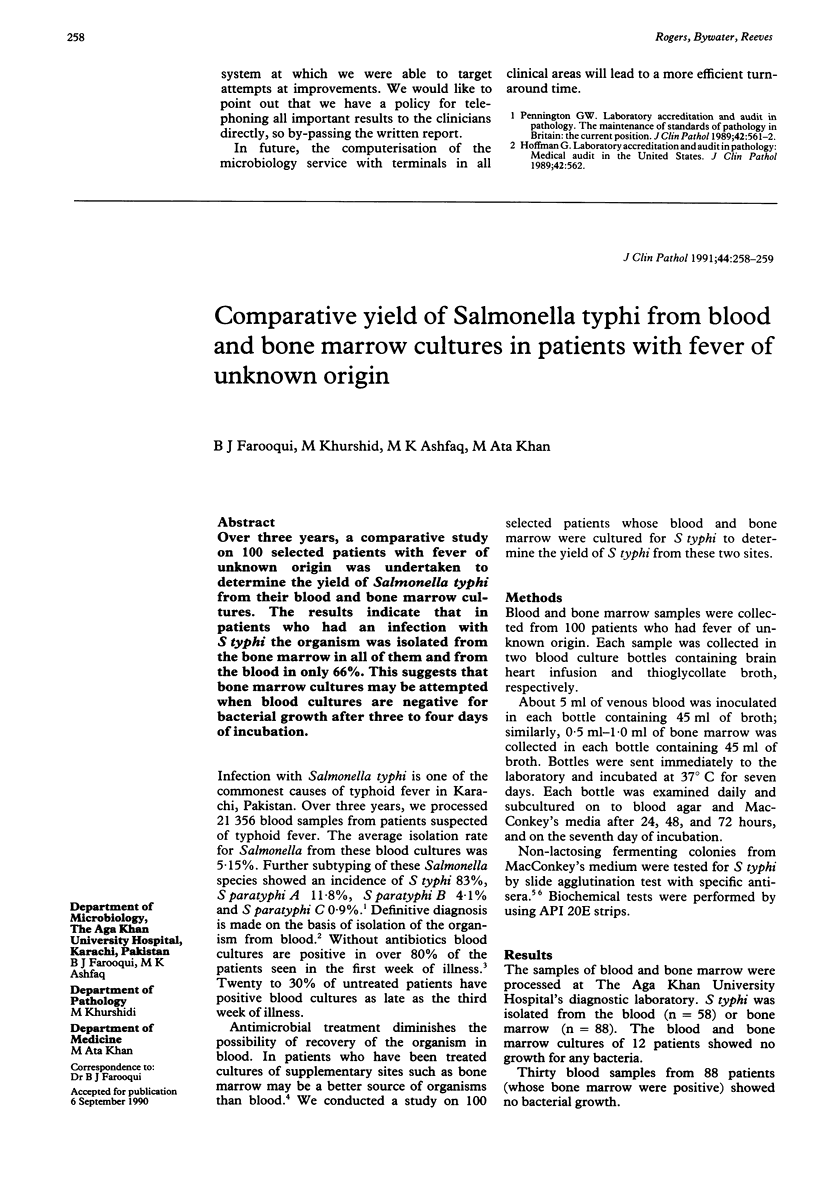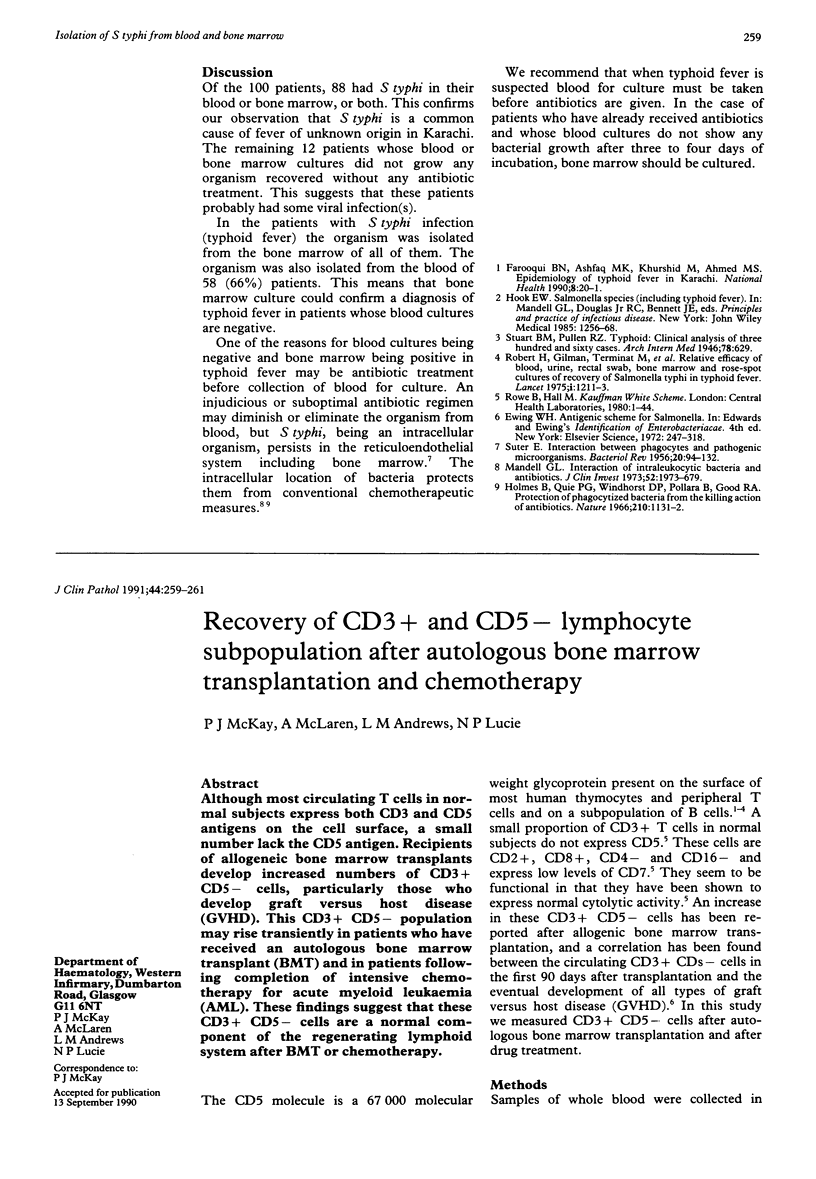Abstract
Over three years, a comparative study on 100 selected patients with fever of unknown origin was undertaken to determine the yield of Salmonella typhi from their blood and bone marrow cultures. The results indicate that in patients who had an infection with S typhi the organism was isolated from the bone marrow in all of them and from the blood in only 66%. This suggests that bone marrow cultures may be attempted when blood cultures are negative for bacterial growth after three to four days of incubation.
Full text
PDF

Selected References
These references are in PubMed. This may not be the complete list of references from this article.
- Gilman R. H., Terminel M., Levine M. M., Hernandez-Mendoza P., Hornick R. B. Relative efficacy of blood, urine, rectal swab, bone-marrow, and rose-spot cultures for recovery of Salmonella typhi in typhoid fever. Lancet. 1975 May 31;1(7918):1211–1213. doi: 10.1016/s0140-6736(75)92194-7. [DOI] [PubMed] [Google Scholar]
- Holmes B., Quie P. G., Windhorst D. B., Pollara B., Good R. A. Protection of phagocytized bacteria from the killing action of antibiotics. Nature. 1966 Jun 11;210(5041):1131–1132. doi: 10.1038/2101131a0. [DOI] [PubMed] [Google Scholar]
- SUTER E. Interaction between phagocytes and pathogenic microorganisms. Bacteriol Rev. 1956 Jun;20(2):94–132. doi: 10.1128/br.20.2.94-132.1956. [DOI] [PMC free article] [PubMed] [Google Scholar]


